Do you feel weird after drinking flavored sparkling water on an empty stomach? Find out about the new leeway the natural flavor industry has to add drug-like compounds to our drinks. I’ll focus on a natural flavor called linalool.
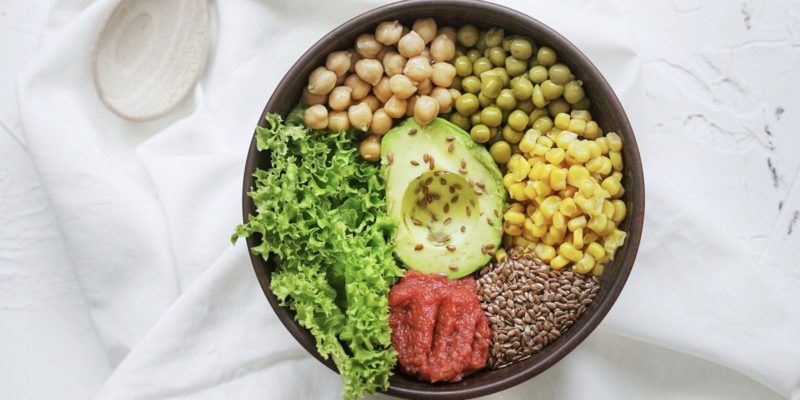
Can you get enough protein from plants? 5 Must know strategies
Table of Contents
- Some plant-strong advocates claim “it’s practically impossible not to get enough protein” from plants. That’s ridiculous because most fruits and vegetables contain very little protein. While it is entirely possible to meet your needs without meat, eggs, fish or dairy, you need to learn where to get plant protein, how much you need, the pitfalls of plant-protein powders, and a few more facts about protein. These five strategies will help start you on the right path.
- Find out how much protein you really need.
- Meed your protein needs with seeds.
- Boost plant-based nutrition with two traditional strategies:
- Combine foods to ensure your protein is “complete:”
- Avoid protein powders and packaged foods made with protein powder. Examples of popular products made with highly processed likely toxic proteins:
- Recommended products (see below for links)
- 1. WARNING: The RDA Underestimates Protein Requirements
- 2. What are the best, protein-rich plant foods?
- 3. Maximize whole food plant-based protein by working with nature.
- 4. Getting protein from plants: You (Might Not) Complete Me
- 5. Avoid Protein Powders
- Soy protein (or bean protein or any plant-based protein)
- Protein isolate
- Protein hydrolysate
- Protein concentrate
- Textured vegetable protein
Some plant-strong advocates claim “it’s practically impossible not to get enough protein” from plants. That’s ridiculous because most fruits and vegetables contain very little protein. While it is entirely possible to meet your needs without meat, eggs, fish or dairy, you need to learn where to get plant protein, how much you need, the pitfalls of plant-protein powders, and a few more facts about protein. These five strategies will help start you on the right path.
Article Summary
Here are 5 strategies for getting enough protein without eating meat: (more details below)
-
Find out how much protein you really need.
- The government set the RDA for protein too low
- Most women need somewhere between 60 and 90 grams of protein per day.
- Most men need between 70 and 100 grams of protein per day.
-
Meed your protein needs with seeds.
- Seeds are the best whole-food, plant-based protein option. Middle Eastern and Indian cuisines are the richest sources of recipes on how to use beans, lentils, and ancient grains.
-
Boost plant-based nutrition with two traditional strategies:
- Sprouting seeds enhances your body’s ability to access proteins.
- Fermenting plant-based milk increases digestibility and reduces some of the toxins generated during manufacturing.
-
Combine foods to ensure your protein is “complete:”
- Beans and grains, like peanut butter and sprouted whole-grain bread
- Beans and seeds, like chickpeas and tahini (sesame seed butter)
- Nuts and seeds, like almonds and pumpkin seeds
-
Avoid protein powders and packaged foods made with protein powder. Examples of popular products made with highly processed likely toxic proteins:
- The Impossible Burger. Contains soy protein concentrate (and vegetable oil—another source of toxins).
- Cliff energy bars. Contains soy protein isolate (and lots of sugar, plus vegetable oil).
-
Recommended products (see below for links)
Protein Deficiency is Common
I’ve found that many people don’t eat enough protein. Especially thin people. I’ve discovered many of my patients unknowingly experiencing health issues due to inadequate protein. I use low white blood cells and low bone density as indications a person might need more protein, which starts the nutrition conversation.
Because protein deficiency is such a widespread problem, I take issue with folks who make it seem like you can blissfully avoid animal products and you’ll automatically be getting enough protein.
This article is continued below...(scroll down)
While most of us know we need protein for muscle building, even doctors rarely connect symptoms to a lack of dietary protein. And the low white blood cell counts I mentioned are tiny red flags, too tiny to catch an overly busy doctor’s attention. Worse, if you inform a busy doctor you have had low white blood counts in the past, he’ll probably assume “that’s just normal for you.” That actually happened to me in my 20s and early 30s, and my health suffered terribly for it. So did my whole family.
This article will cover the highlights of what I share with patients to prevent low-protein problems like those that affected myself, and my family, and help your plant-strong diet make you stronger.
The Choice is YOURS!
Just a quick note about plants versus animals: I do not believe a plant-strong diet is superior to a diet that includes animal products. I respect the personal choice. So if you chose to avoid meat, fish, eggs, dairy, etc., I want to help support you.
What kind of diet do I recommend? One that includes all 4 elements of traditional cuisine. To find out what that looks like, visit the Deep Nutrition made simple page. And for all the glorious details of why Deep Nutrition is so powerful, including some of the science that never gets discussed in medical school, read the book!
1. WARNING: The RDA Underestimates Protein Requirements
The government Recommended Daily Allowance (RDA) is supposed to tell us how much protein we need. But, they don’t. They were set back in the 1940s before we understood protein metabolism as well as we do now. According to new science, those older techniques “significantly underestimated” how much protein we need, and our real needs may be as much as “50% higher than the current Dietary Reference Intakes recommendations.”
Unfortunately, nothing has changed in government RDA-land, in spite of scientists’ warnings. So, if you go online to calculate your protein needs, many calculators give you an amount that’s at least 30 percent too low. For example, an RDA calculator will tell a 120-pound woman that 40 grams are enough when in reality she probably needs 60-80 grams.
If you eat too much, that’s not good either.
How Much Protein Do You Need?
Protein needs vary based on your height, weight, age, bone thickness, and muscle mass.
Protein is like the Goldilox of macronutrients. You have to get the amount just right because too much and too little can both be bad. Compared to carbohydrates and fat, the range of what’s a healthy average daily protein intake is much narrower. I’ve created a one-sheet protein calculator that you can use to approximate your needs. It’s one of the items in the basket of goodies you can download when you subscribe to the newsletter.
What is protein and why do we need it?
Protein is one of the fundamental building blocks of life. Every organ in your body is made of mostly protein. And everything you look at in the mirror is protein, from the hair on your head to the whites of your eyes to the nails on your toes. Your skin and bones are mostly protein, too. The enzymes in your digestive system are made of protein. All the functional machinery in every one of your cells is made of protein. Your immune system cells and antibodies are built with mostly protein. Many neurotransmitters, the brain chemicals you need for thinking, learning, and experiencing joy, are made from the building blocks of proteins, called amino acids. (More on amino acids, in section 4)

Protein deficiency causes different problems at different ages. If you don’t get enough in childhood, it can stunt your growth, diminishing not just height but also skeletal robusticity. Deficiency can cause learning disorders, digestive intolerance, immune system disorders, and much, much more. Deficiency during adulthood can shrink your heart, brain, and other vital body parts, and even steal inches from your height. Low protein can cause literally thousands of problems. So getting enough is literally essential to good health at every age.
Beware the Outdated Definition of Protein Deficiency
The reason so many plant-strong advocates don’t consider protein deficiency a serious concern is they’re defining deficiency using a very old-fashioned standard. The authors of the most popular vegan books of the past two decades believe that a person must reach an advanced state of malnutrition (called kwashiorkor) before they consider inadequate protein consumption as a cause of their problems. Kwashiorkor causes severe, multi-organ dysfunction including brain damage that may not be fully reversible, so if that’s what you’re waiting for, you’re going to show up too late to help your patients.
2. What are the best, protein-rich plant foods?
If you google “high protein plants” you get a lot of lists, “15 best sources of plant food.” and so on. You don’t need to memorize lists. There’s a shortcut that will help you easily identify the highest protein plant foods. You just need to know one fact about a plant’s anatomy: of all the parts of a plant, leaves, stem, flower, root, and so on, the seed is where you will find the most protein.
But we don’t always name a plant’s parts botanically correctly. Sesame seeds, sunflower seeds, chia seeds, those are obvious. Other terms to know are beans (examples: lima, pinto, kidney), nuts (hazelnuts, walnuts, almonds), grains (wheat, barley, oats), legumes (soybeans, peas, peanuts, lentils), pulses, and cereals—phew. All of these are terms for seeds that, if they’re intact, can grow into a complete, new plant. (They can’t grow into a new plant if they’re already processed like into flour, or hulled into rice. (I hope that’s obvious)). For the purposes of simplifying the rest of this article, I’ll just use the term “seeds” to refer to all of them.
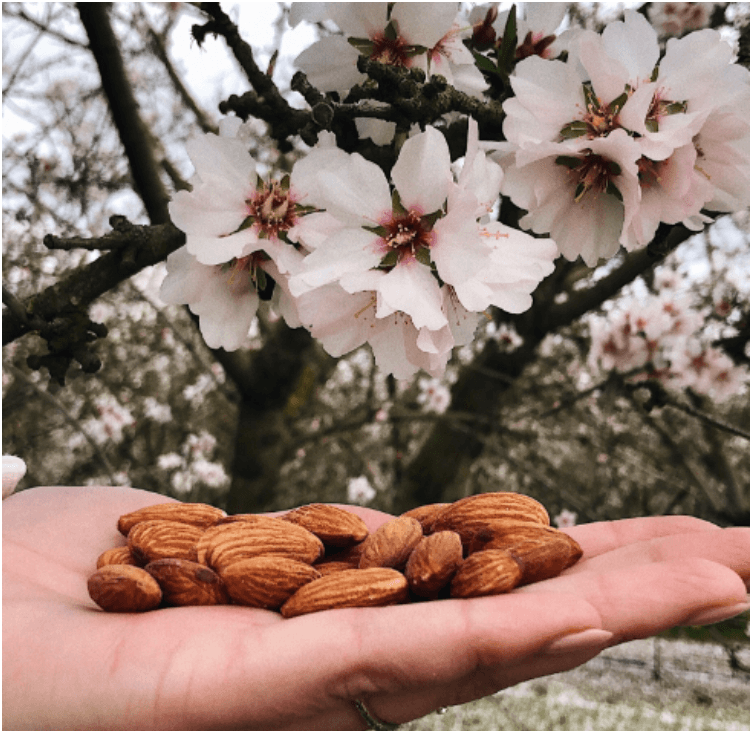
Are Nut Butters Healthy? Anything Else Ready-to-Eat?
Nut butters, like peanut and almond, and bean pastes, like hummus and refried beans, are traditional, minimally processed foods made from seeds that are also good sources of protein.
3. Maximize whole food plant-based protein by working with nature.
The best way to maximize the nutritional value of seeds is to ask Mother Nature to help. There are two ways nature steps in to optimize the nutrition you can get from seeds: Sprouting and Fermenting. Sprouting is easier, so we’ll talk about that first.

The Health and Nutrition Benefits of Sprouting
Sprouting is a necessary part of plant-based life that few vegan cookbooks seem to talk about. It’s necessary because seeds are designed by nature to stay in a dormant state until conditions are just right for germinating. Until that time, proteins and other nutrients in seeds are protected by antinutrients. Antinutrients also make the seeds relatively indigestible and flavorless, preventing, animals, fungi, and other predators from eating them. So to maximize digestibility you need to trick the plant into thinking the time is right. How? With water, darkness, and time.
More properly called germinating, sprouting in this context refers to the process of soaking and watering the seeds just long enough to get the germination process started—we’re not turning it into a sprout, here. We’re just getting the tip of a rootlet to show.
The two steps of germination do different things that benefit us.
The first step is soaking. Soaking every one cup of beans in at least 6 cups of water wakes up the enzymes in the seed that kick start the germination process. One of those enzymes breaks down the phosphorus binding “anti-nutrient” called phytate, releasing phosphorus.
The second step is draining the seeds and getting that little root to develop. (Instructions below.) During this step, the phosphorus released in step one triggers a cascade of life-starting enzyme activity that releases other bound-up minerals. As the germination continues and the seed starts to sprout, enzyme activity generates new vitamins and frees up storage fats, amino acids, and starch for energy and growth purposes, thus transforming a dormant seed that may be centuries old into a living embryo and ultimately, if the process continues the way nature would have it, into a baby plant—all in a matter of days. Pretty high tech.
Can I Eat Canned Beans?
Canned beans still provide protein but there are very few vitamins left after canning and extended storage. Fortunately, beans are a lot easier to sprout than other seeds, like nuts.
Do I Need to Sprout Everything Myself?
When it comes to nuts and seeds like pumpkin or sunflower, you need a dryer to avoid mold growth so I prefer to buy nuts and seeds that have already been sprouted. Good brands are Go Raw and Foods Alive.
Cooking beans will help you get more protein from beans but there’s a downside
Unlike nuts and certain seeds, you need to cook beans and grains to digest them. Heat plus water denatures, or unpacks, the proteins so your digestive enzymes can access these nutrients that nature packs into the seed so tightly that our digestive enzymes can’t squeeze between the molecules and they’d pass right through us. But there’s a downside to this. Cooking can destroy some of the more delicate nutrients, like vitamins A, B1, B2, B9, and C. When beans are soaked or sprouted first, it cuts the cooking time in half.
For recipes and ideas on what to do with all kinds of beans, a great place to start looking for recipes are cuisines that have a whole-food plant-based history include middle eastern, Indian, and Asian.
How to Sprout:
- Place beans (non-irradiated, see products below for a link to the best brand) in a large bowl, rinse, pour out the water once or twice, then add at least 4x as much water and cover the bowls, place in a dark room temperature location.
- In 8-24 hours, pour the water off by dumping the beans into a colander or strainer. Then rinse the beans for a few seconds. Place the colander or strainer in a bowl or over a plate to drain. Cover. Every 12 to 24 hours, rinse again. You’re basically ‘watering’ the seeds in the colander. After 24 to 72 hours, most beans will be starting to sprout.
- If they don’t they may be irradiated, and this is increasingly a problem. Fortunately, you still get a lot of benefits by simply soaking.
Shortcut: Soaking
Simply soaking seeds overnight in a bowl with at least 4x as much water as bean will go a long way towards getting you the benefits of sprouting.
Buy Fermented Foods Whenever Possible
Fermenting, to make foods like yogurt enables microbes to enhance the nutrition of the food being fermented.
If you want to make plant-based milks a regular part of your diet, you really should consider yogurt instead. This is particularly true for soy milk. Making soy milk involves a lot of heating, and the fatty acids in soybeans are not heat stable (see good fats and bad) they break down into toxic aldehydes that are harmful to your body, especially your gut. Fermenting the soy milk into soy yogurt breaks down the toxins while generating gut-supporting pro-and prebiotics. Hemp milk’s fatty acids are also even more fragile than those of soy, so be sure to avoid hemp milk in favor of yogurts made with hemp milk.
Coconut, rice, oat, and other common plant-based “milk” would not have the toxic fatty acids of soy or hemp, but their protein content is very low. Fermenting these into yogurt also enhances their nutritional value. Whenever possible and all else being equal choose the yogurt over the milk.
The trouble with plant-based yogurts is their added sugar, which often equals or exceeds the total protein content. So if you’re serious about being healthy on a plant-based diet, maybe make your own yogurt.
Traditional tofu and miso are also fermented and I recommend them, too.
4. Getting protein from plants: You (Might Not) Complete Me
When you’re living on plants, you may be eating protein that your body isn’t able to use. Most seeds are too low in one or more of the essential amino acids to be considered a complete protein. Soybeans may be an exception, but it depends on what strain of soybean you’re eating(!)To get a complete set, you can combine different categories of seeds.
What is a “complete” protein?
All the proteins in your body are constructed out of just 20 unique kinds of building blocks, called amino acids. Amino acids are like the alphabet in that you need all 20 to make a protein just like you need all the letters in the alphabet to write a book.
Our bodies can only make about half of these building blocks. The rest we need to eat. If we don’t eat them all, we’ll suffer from a deficiency. Foods with all 20 types of amino acids in roughly the balance that a human body needs are considered a “complete” protein.
If you don’t get a complete set of amino acids, you may add up your total daily protein intake and think you’re getting enough, but you could be wrong. Possibly even very deficient. How? Because, as you just learned in the section, above, without all 20 amino acids on hand, your body can’t build what it needs to. It’s like that old poem, For want of a nail the shoe was lost. If you’re missing just one amino acid of the 20, then all protein production comes to a stop.
It gets more complicated because some of the amino acids your body can make can only be manufactured under certain circumstances. These 6 are called “conditionally essential” amino acids to refer to the idea that sometimes you can’t make them and you need to eat them, too, in addition to the other 9 “essential” amino acids. Depending on the constitution of your diet on any given day, you may not be able to make one or more of those 6 conditionally essential amino acids.
How to Complete the Incomplete
For a common example of how to complete an incomplete set of amino acids, take the example of peanuts. Peanuts are a very high protein seed but are low in an essential amino acid called methionine. So if you eat a lot of peanuts or peanut butter, you need to eat a lot of something else with methionine. Fortunately, wheat is a decent source of methionine, and eating peanut butter on sprouted grain bread will get you the complete set of essential amino acids you need.

As you’re learning about balancing amino acids, please keep in mind that many plant-strong advocates and authors will wrongly tell you that you don’t need to worry about getting enough protein, so be sure to sign up for the free basket of goodies where you can download my handy calculator.
As you can see, balancing amino acids on a plant-based diet is not as easy as biting into a juicy steak or boiling an egg. But if you’re serious about going without animal products more than just once in a while, learning more about what plant combinations create a complete protein is an *essential* part of your survival tool kit.
Animal Proteins Are Complete Proteins (Except Collagen)
People are animals. So when you’re eating animal products, you almost automatically get all 20 amino acids because animals are so similar to us. But plants are not at all like us and their seeds are often lacking in one or more of the essential amino acids.
Collagen protein is the exception to this rule. Collagen is an animal protein but it lacks one of the essential amino acids (tryptophan). So if you’re living entirely on pork rinds, gelatin, or collagen powder, you’re not going to be getting a complete protein. It’s actually important to get collagen in your diet. Collagen has special properties that all other proteins (plant and animal) don’t have. So I recommend you include some collagen in your weekly routines. The best source of collagen is bone stock. [click here for a recipe.]
5. Avoid Protein Powders
You absolutely need to be getting your protein from whole foods. Not powders.
Unfortunately, the plant-based food industry relies heavily on protein powders to bump up their protein content. That means most ready-to-eat, high-protein, plant-based foods like shakes, protein bars, crackers, chips, and other snack foods are full of protein powder. Even meatless hamburgers may be loaded with protein powders in addition to a smattering of real-food beans and seeds.
Due to processing, these powders will contain less protein than the original ingredient. And that translates to overpromises on the package label. This includes proteins from soy, pea, hemp, rice, potato, and all the others listed as XX “protein”— they’re all highly processed powders.
One problem: protein powders are not food. They are factory products that were never proven to be safe for extended consumption. So in essence, if you’re living off these processed powders, you’re living on an experimental diet.
How to Spot Processed Plant Protein Powders
Make sure to read the ingredients list and avoid the following:
-
Soy protein (or bean protein or any plant-based protein)
-
Protein isolate
-
Protein hydrolysate
-
Protein concentrate
-
Textured vegetable protein
The vast majority of your ready-to-eat, plant protein-rich foods contain highly processed powders. This is a problem because the processing procedures may mangle the amino acids. If your product contains mangled amino acids then it will not provide the level of protein promised on the label. Plus, the mangled amino acids are nitrogenous waste that your liver and kidney will need to eliminate. This puts a strain on your body’s antioxidant and waste-elimination systems.
The particular product you purchase may have a mild toxin or a powerful one, or be just fine, there’s no way to know because no agency tests for this. Basically, you’re counting on the goodwill of the manufacturer to do everything right.
One of the best sources of information about how processing plants can make them toxic comes from industry insider Paul Stitt, who, way back in the 1980s, reported on results of animal testing that showed a puffed wheat product like that used to make children’s cereals killed rats faster than a starvation diet of water and a few minerals. This kind of research is rarely performed today.
I’ll be writing more about protein powders in the future, so be sure to subscribe!
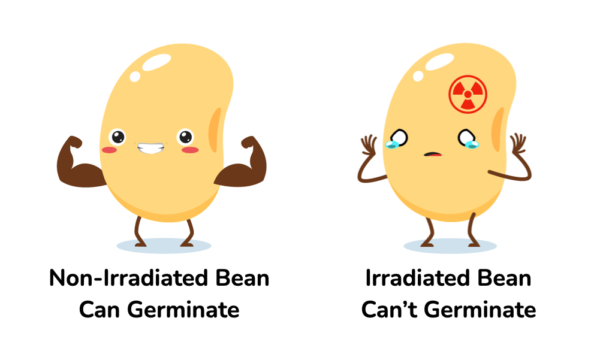
Recommended Products
Beans (non-irradiated): https://drcate.com/shopping-list/#beans
Sprouted Pumpkin Seeds (the tastiest brand): https://drcate.com/shopping-list/#pumpkin-seeds-sprouted
Sprouted Sunflower Seeds (the tastiest brand): https://drcate.com/shopping-list/#sunflower-seeds
Further Reading and References
Fighting the Food Giants, by Paul Stitt
We need more protein than the RDA says: “Evidence that protein requirements have been significantly underestimated”
- Quote from the above article “The mean and population-safe requirements in adult men were determined to be 0.93 and 1.2 g/kg/day and are 41 and 50%, respectively, higher than the current Dietary Reference Intakes recommendations.”
Soy fatty acids break down into toxic aldehydes during processing: “Selected Odor Compounds in Soymilk As Affected by Chemical Composition and Lipoxygenases in Five Soybean Materials”
Fermenting soy milk removes toxic aldehydes “Metabolism of oligosaccharides and aldehydes and production of organic acids in soymilk by probiotic bifidobacteria”
Osteoporosis: “Vegetarian and vegan diets and risks of total and site-specific fractures: results from the prospective EPIC-Oxford study”
Please note: Please do not share personal medical information in a comment on our posts. It will be deleted due to HIPAA regulations.
This Post Has 10 Comments
Note: Please do not share personal information with a medical question in our comment section. Comments containing this content will be deleted due to HIPAA regulations.



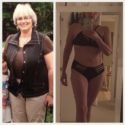



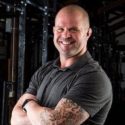









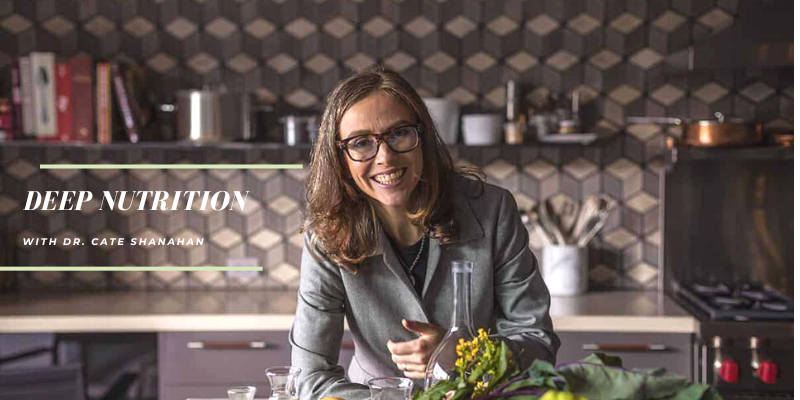
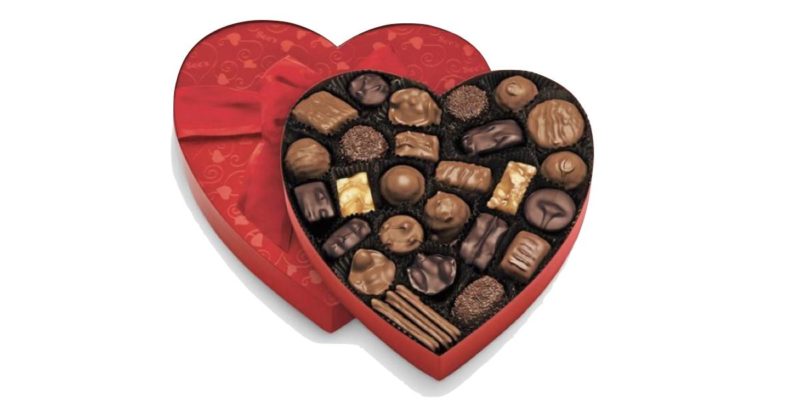
before or after a workout i like to have a protein shake. Are there any powders your recommend. I read your article and it seems you don’t support most powders. thanks.
Great questions! Because I am sorry to say that unless you’re a competitive bodybuilder, taking a protein shake before a workout is a terrible idea! Why? It blocks fat burning and forces you to burn the protein in the shake for energy. This is fundamental physiology that applies to anything you consume. And it is a huge dirty secret of the workout supplement industry. I’ll be writing more about this in the future.
Hi Dr Cate, if you accidentally consumed some vegetable oil via a scummy vendor that lied about its presence, is there anything you can take immediately afterwards to minimize its effects on the body? Like, say pop a gelatin pill of activated charcoal, down a load of water or take enzymes? Is there anything one can do?
Thanks
Hi Simon,
Intersting idea. I wouldn’t advise taking activated charcoal just because it has so many effects itself. Vegetable oil and the toxins we get from eating foods cooked in vegetable oil are most harmful after decades of consumption because of how it builds up in our body fat and the downstream effects of that. I’d say chalk it up to lessons learned and going forward you’re now all the wiser.
I have read several of your books which are very inspiring to work on nutrition. I have been recently reading your articles sent over email which are very knowledgeable, guided and distinctive. This motivates to be a regular reader. Thanks for the basket of goodies.
Dr cate Thank you very much for all this information. I have read Deep nutrition and fat-burn fix. and I have been following the human diet for more than a year and it transforms my health, body, concentration, joints, and everything. Now I eat for nutrition not fuel. I have a question that wasn’t covered fully by your amazing books. Do I need to increase my calories intake and protein more than normal, beside working out, to build muscles ?
Very good question. You can’t force your body to build muscle by eating more protein, no. Your genetics and activity level are your best bets to accomplish that.
Thank very much dr cate for your respond. What about calories. Can I build muscles without eating more calories ? Because it is very common in body building that you have to eat more than your normal calories to be able to gain muscles.
For a non-body builder to gain muscle, I don’t believe you need to do anything special. What’s required would be the normal exercise, enough youth to have some level of hormones, and building blocks that include protein ideally from whole foods and collagen stimulating peptides, ideally from bone stock. And of course avoiding seed oils and excessive sugars and flours and a balanced diet. Body builders are trying to accomplish something beyond what the body really wants to do, they are in a sense asking for supra-physiology, so that’s a whole different story and not everyone can do what they do.
Thank you very much dr cate for your amazing answer. Your answer clarifies a lot of misconceptions. I suggest that you write more about building muscles for non-body builders because there is a lot of misconceptions and myth in this area.